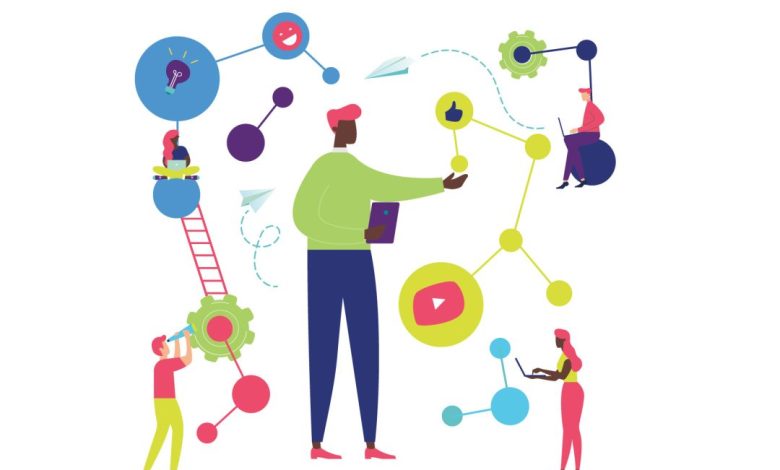The Science Behind Animated Explainer Videos and Learning

In today’s fast-paced digital world, the way we consume information has drastically evolved. Traditional text-based learning methods are increasingly being supplemented, and often replaced, by more engaging and interactive formats. Among these, animated explainer videos have emerged as a powerful tool for education and training. But what is it about these videos that make them so effective? Let’s delve into the science behind animated explainer videos and their impact on learning.
The Power of Visual Learning
Visual learning is one of the most effective ways to absorb and retain information. According to research, the human brain processes visual information 60,000 times faster than text. This rapid processing is due to our evolutionary development; humans have always relied on visual cues for survival, from recognizing faces to interpreting complex environments.
Animated explainer videos leverage this natural predisposition by presenting information in a visually appealing and easily digestible format. By combining images, text, and audio, these videos cater to multiple learning styles simultaneously, making it easier for a broader audience to grasp complex concepts.
Cognitive Load Theory
Cognitive Load Theory (CLT) is a cornerstone of educational psychology that explains how information is processed in our working memory. The theory posits that our working memory has limited capacity, and learning is most effective when instructional methods minimize cognitive load. Animated explainer videos excel the Science Behind Animated Explainer Videos and Learning.
These videos simplify information by breaking it down into manageable chunks. Instead of overwhelming the learner with dense paragraphs of text, they use concise narration paired with relevant visuals. This dual-channel approach (visual and auditory) reduces cognitive overload, allowing learners to process and retain information more efficiently.
The Multimedia Principle
The Multimedia Principle, proposed by Richard Mayer, states that people learn better from words and pictures than from words alone. Mayer’s research suggests that combining visual and verbal elements helps learners build mental connections, enhancing understanding and retention.
Animated explainer videos are a perfect embodiment of this principle. By integrating animations, graphics, and voiceovers, these videos create a multisensory learning experience. This multisensory approach not only keeps learners engaged but also helps in encoding information into long-term memory.
Emotional Engagement
Emotion plays a crucial role in the learning process. Studies have shown that emotionally engaging content can significantly enhance retention and recall. Animated explainer videos often incorporate storytelling elements, humor, and relatable characters to create an emotional connection with the audience.
This emotional engagement helps in several ways. Firstly, it captures the learner’s attention, making them more likely to stay focused throughout the video. Secondly, it makes the information more relatable and memorable. When learners can connect with the content on an emotional level, they are more likely to retain the information and apply it in real-world scenarios.
Active Learning and Interactivity
Active learning involves engaging learners in the process of learning through activities and discussions, rather than passively receiving information. Animated explainer videos can be designed to incorporate elements of active learning.
Interactive features, such as quizzes, clickable elements, and prompts for reflection, can be embedded within the videos. These features encourage learners to think critically about the content, apply what they have learned, and receive immediate feedback. This active engagement fosters a deeper understanding of the material and promotes higher-order thinking skills.
The Personalization Advantage
One of the significant benefits of animated explainer videos is their potential for personalization. These videos can be tailored to meet the specific needs and preferences of different learners. For example, complex topics can be explained using relatable analogies and examples that resonate with a particular audience.
Personalization enhances learning by making the content more relevant and meaningful to the learner. When learners see themselves reflected in the content, they are more likely to engage with it and understand its practical applications.
The Role of Repetition and Reinforcement
Repetition and reinforcement are critical components of effective learning. Animated explainer videos can be easily replayed, allowing learners to review the content as many times as needed. This repeated exposure helps reinforce key concepts and ensures that learners have multiple opportunities to understand and retain the information.
Moreover, these videos can be integrated into a larger curriculum or training program, where key points are revisited and reinforced through various modules. This iterative approach helps solidify knowledge and promotes long-term retention.
Practical Applications and Case Studies
The effectiveness of animated explainer videos is not just theoretical; numerous case studies and practical applications highlight their impact on learning. For instance, in corporate training, companies have reported significant improvements in employee performance and knowledge retention after incorporating animated explainer videos into their training programs.
In educational settings, teachers have observed increased student engagement and better comprehension of complex subjects when using these videos as supplementary learning tools. Similarly, in the healthcare sector, animated explainer videos have been used to educate patients about medical procedures and treatments, leading to better-informed decisions and improved patient outcomes.
Conclusion
The science behind animated explainer videos and learning is rooted in well-established principles of cognitive psychology, multimedia learning, and educational theory. By leveraging the power of visual and auditory stimuli, reducing cognitive load, fostering emotional engagement, and promoting active learning, these videos have proven to be an effective and versatile tool for education and training.
As technology continues to evolve, the potential for animated explainer videos to enhance learning experiences will only grow. By understanding and applying the principles behind their success, educators, trainers, and content creators can harness the full potential of these powerful tools to create engaging, effective, and memorable learning experiences for diverse audiences.




